Drip Irrigation For Residential Landscapes
Drip Irrigation has become the standard in agriculture and landscaping across the world. Netafim, the global leader in this field, pioneered the technology that makes it so effective.
As a contractor who has been installing irrigation systems for 20 years, I’ve seen first-hand how drip irrigation performs in residential landscapes. I’ve also returned to many of these gardens years later, giving me a clear view of how well these systems hold up over time.
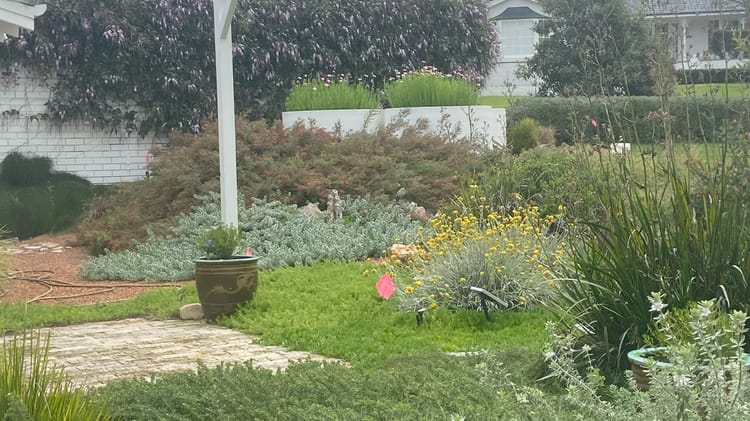
Image: 3 year old Garden Primarily being watered by Dripline
My aim in this blog is to share from my own experience on drip irrigation systems and their effectiveness for residential landscapes — from a contractor’s point of view.
Does Dripline Work?
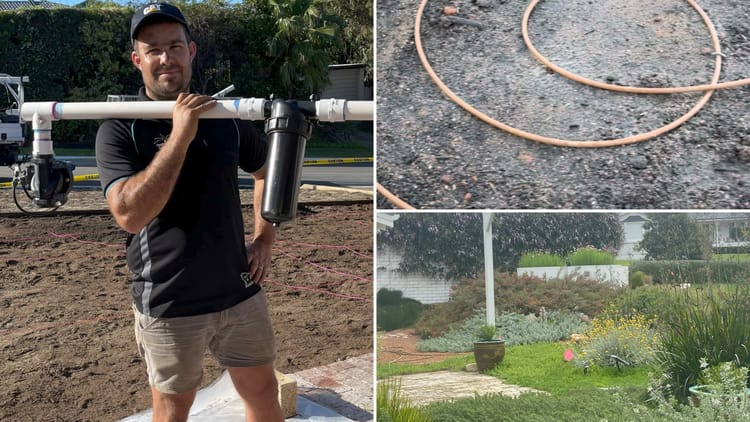
Over the years, I’ve had many conversations with other landscapers that usually go something like this: “dripline just doesn’t work. Whenever I see that rubbish, I rip it out and put sprays in.”
I want to challenge that perception. The truth is, drip irrigation does work — and when installed correctly, it can be one of the most effective and efficient ways to irrigate a garden. Like any product, it needs to be installed and maintained properly. Anything installed incorrectly won’t perform well.
Key Benefits of Drip Irrigation
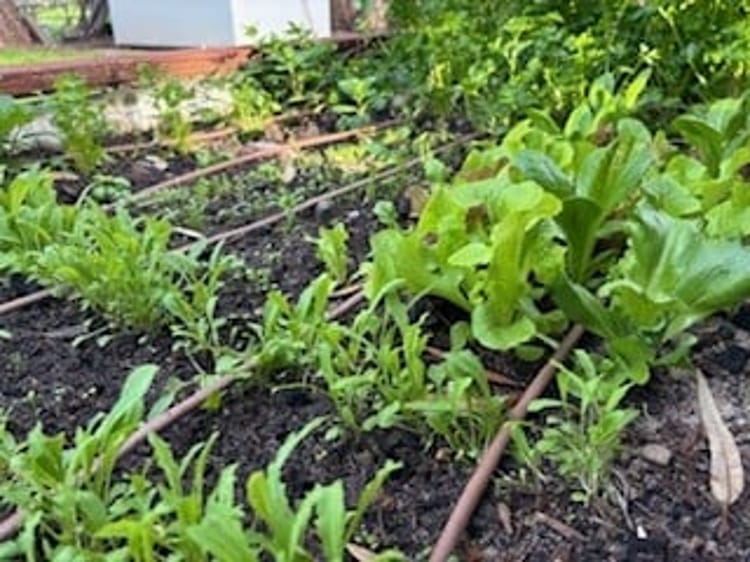
- Less evaporation – Water is delivered directly to the soil and root zone, rather than being sprayed into the air. This reduces drift, evaporation, and waste.
- Adapts to growing gardens – As plants mature, sprays can be blocked and require adjustment. Dripline delivers water consistently at the base, regardless of plant height or density.
- Lower pressure requirements – Dripline generally runs at lower pressures than sprays, making it more waterwise and often more reliable.
- Uniform watering – When laid in a grid pattern, dripline distributes water evenly across garden beds, encouraging even root growth.
- Reduced leaf wetting – Some plants don’t tolerate overhead water well. Dripline avoids this by targeting only the soil.
- Better aesthetics – With no risers or sprays visible, the focus remains on the plants and garden design.
- Less damage during maintenance – Sprays and risers are often clipped or broken during hedging or mowing. Dripline sits safely under mulch.
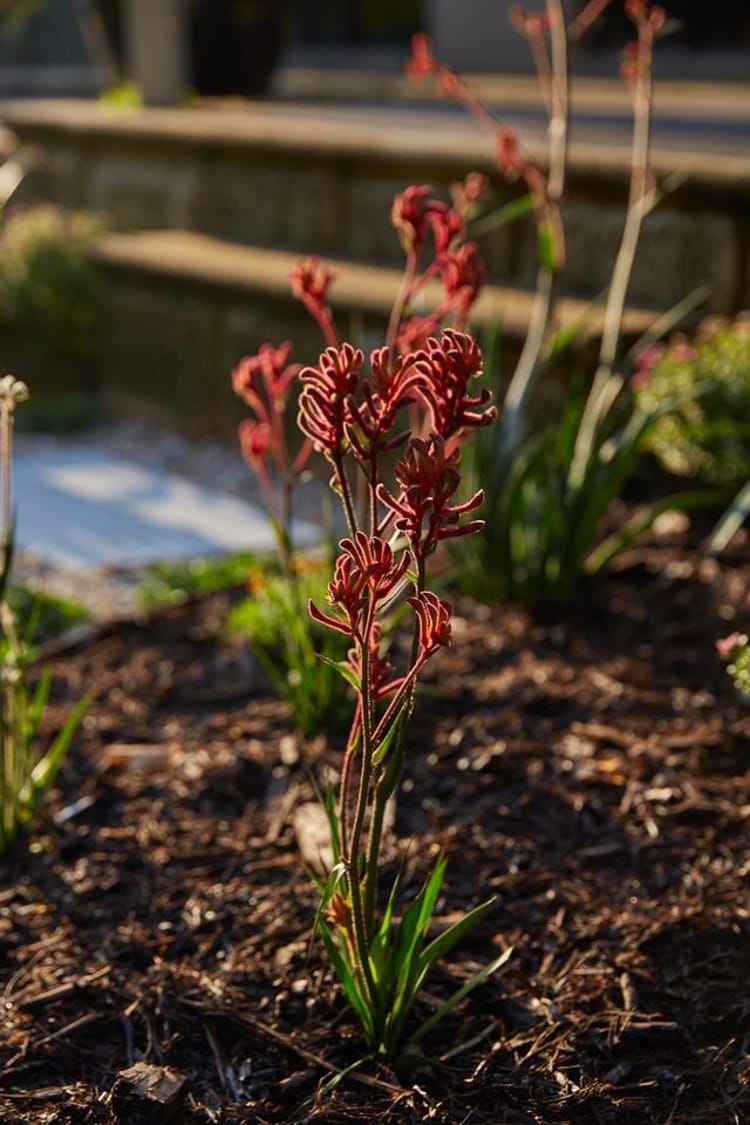
When Dripline May Not Be Ideal
There are some scenarios where drip irrigation isn’t the best choice — for example, if you regularly rotary hoe through beds or replant annuals each season. But for the majority of residential gardens in Australia and around the world, dripline is a highly efficient, effective solution.
How to Get the Most from Your Drip Irrigation System
1. Soil
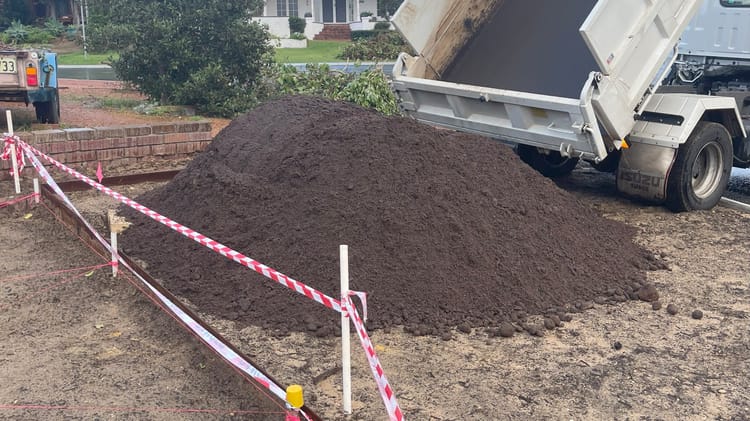
Improving soil is critical. In sandy conditions, water can drain straight through without spreading across the root zone. By adding organic soil mixes, compost, or clay (where appropriate), you create a sponge effect so the water both soaks in and spreads sideways. Aim for at least 100 mm of improved soil beneath the dripline to give your system the best chance of working effectively.
2. Mulch
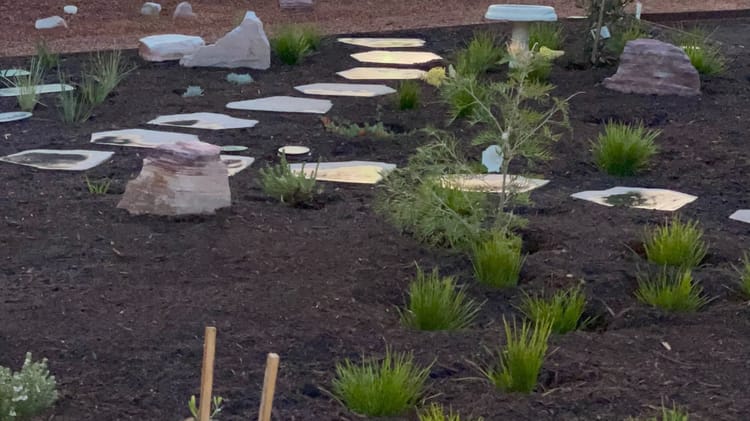
For residential gardens, I typically place the dripline on top of the prepared soil and then cover it with 50–100 mm of quality mulch. This helps further reduce evaporation, keeps the soil temperature more stable, and protects plant roots. A good mulch layer also shields the dripline itself, preventing sun damage and helping the system last longer, while improving the overall appearance of the garden.
3. Work out the correct zone size
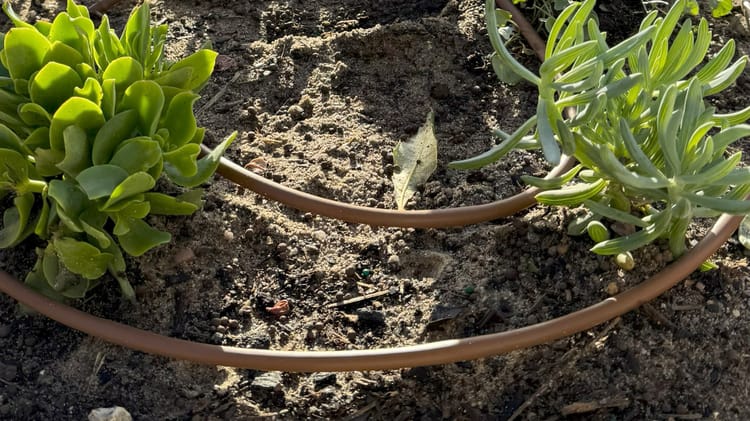
Every drip product specifies emitter flow rates. For example, Netafim Miniscape (also known as Landline 8) delivers 2.0 L/hour per emitter at approximately 100 kPa, and is available with 15 cm or 30 cm dripper spacing.
Start with a flow and pressure test at your water source, then calculate:
- How many drippers per zone
- How many meters per station
- Correct spacing for plant layout
The key is not to oversize a station. If too many drippers are running, the system won’t deliver water evenly.
4. Pipe size and dripline type
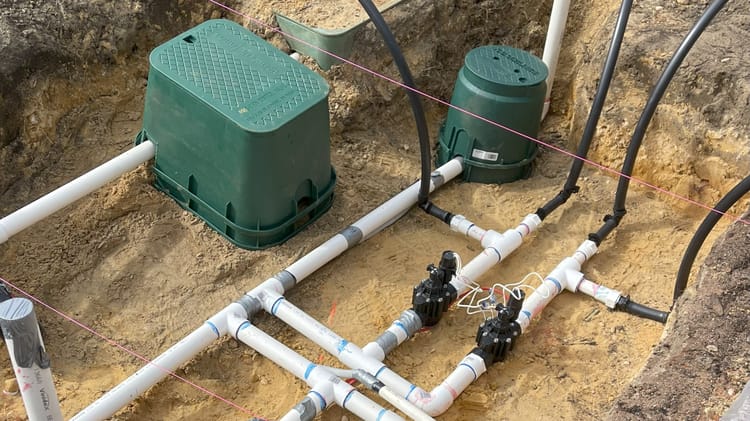
Pipe sizing matters. If you’re running a 2-horsepower bore pump delivering 80+ L/min, you’ll need a larger pipe diameter from the solenoids. Lower-pressure mains systems can usually use standard size poly pipe, but a flow and pressure test will confirm the right size.
Dripline choice is also critical, especially on bore water. Bore supplies often contain fine particles, minerals, and organic matter that can clog emitters. Netafim Aries™ high flow 8L/hr dripline is specifically built for tougher conditions, with a clog-resistant TurbuNext™ labyrinth emitter and durable wall thickness. It’s a reliable long-term choice for bore applications where standard drip may struggle.
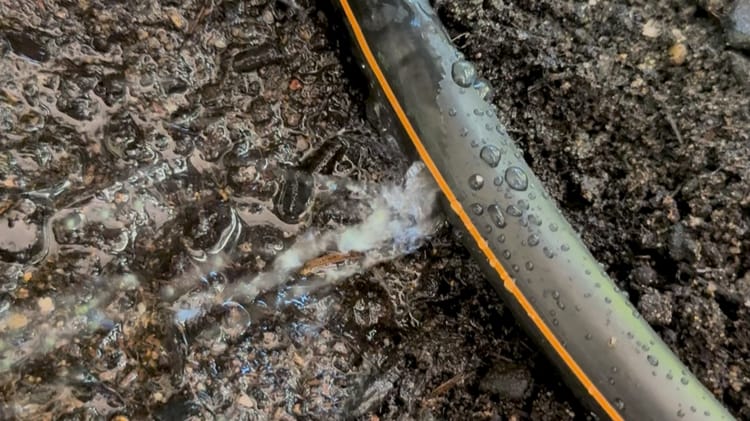
5. Practical installation tips
- Avoid long single runs that exceed the maximum run length of the product (e.g. 100 m). Break lines into shorter rows, usually the length of a garden bed.
- Bring lines neatly back for serviceability.
- Stake/peg the drip laterals to ensure they stay under the mulch and in place
6. Key components for reliability
-
Automatic flushing valves
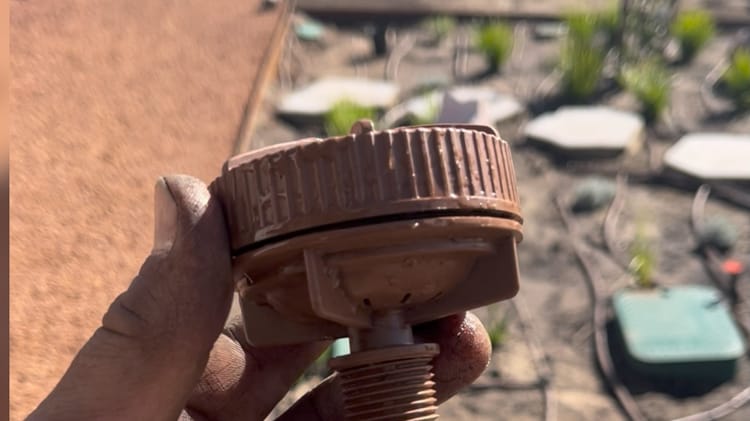
Installed at the end of every line. Flushes debris at startup, then closes automatically. Minimum operating pressure 60kpa – 70kpa. Keep them accessible, not buried. These valves are often installed and then forgotten. Over time, plants can grow over them, making them inaccessible, and people forget where they are. Mark their location clearly or install them in a spot that remains accessible, as they may need servicing in the future.
-
Vacuum breaker - (air release valve)
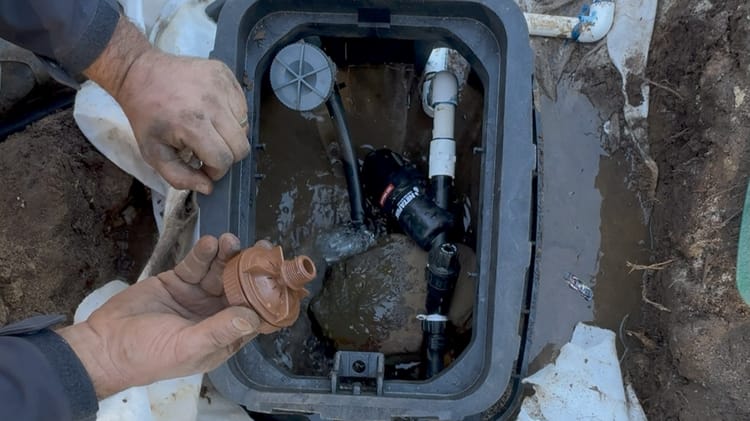
Prevents “suck back” when the system shuts off. Place at the highest point (or on a riser). Use more than one if needed. Like flushing valves, these can be overgrown by plants if not carefully placed. Ensure they are installed in accessible locations or marked to avoid being lost over time.
-
Disc filter
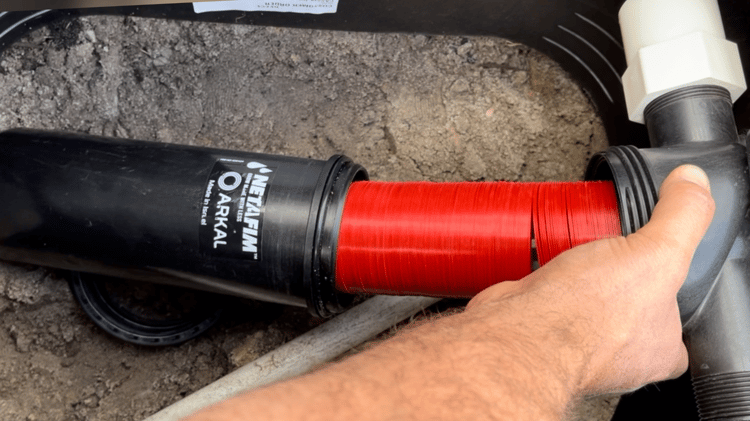
Use at the start of the system to ensure no contaminant enters the drippers providing system longevity and reliability. Red discs (130micron) are the recommended option.
-
Pressure regulator
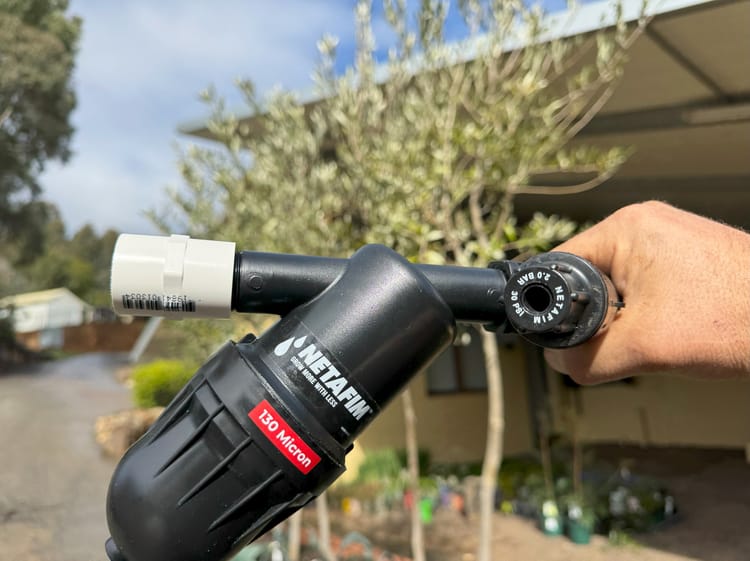
Dripline works best at 10–35 psi. Too much pressure can burst emitters, too little causes uneven watering. Most systems run around 25 psi; thin-walled drip tape may need closer to 15 psi. Pressure-compensating driplines (like Netafim Techline AS or RC) regulate themselves, while non-compensating driplines need an external regulator.
-
Indicator flags
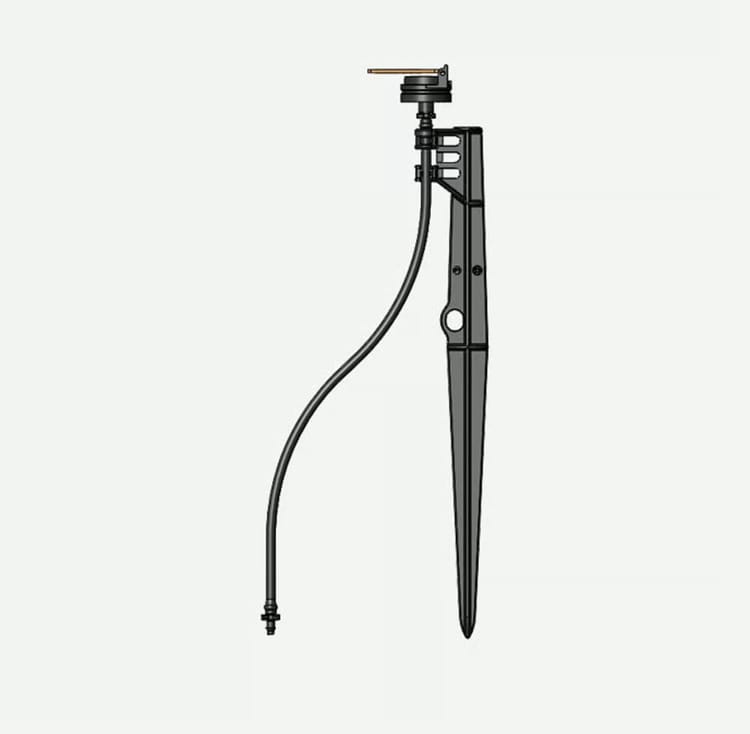
Netafim indicator flags are a simple but very useful addition. If the flag pops up, the line is pressurised. If it doesn’t, you may have a leak, a stuck flush valve, or another issue. They make system monitoring much easier.
Contractor’s Perspective on Drip Irrigation
From my personal experience, drip irrigation can work incredibly well when installed correctly. Thirstier plants may still need supplementary dripline, and plant type (native or non-native), eventual size, and garden design all need to be considered.
The difference between a system that works and one that fails is usually down to the details: soil preparation, station sizing, pipe sizing, dripline selection, and correct installation of the key components. In many cases where people claim drip doesn’t work, it’s because these steps weren’t followed.
Everything in irrigation has its pros and cons. But from my experience, the benefits of drip irrigation far outweigh any drawbacks — especially when using Netafim systems.
I’ve been installing Netafim products for the majority of my working life. They are consistently high quality, robust, and durable, and they perform reliably in real-world conditions year after year.
As a contractor, my goal is to change people’s perception of drip irrigation. Too often it’s dismissed as ineffective, when in reality, if designed and installed properly, it is one of the most efficient, waterwise, and reliable irrigation methods available for residential landscapes.
Author:



Comments
We'd love to hear your thoughts! To enter a comment, type your name and email address.